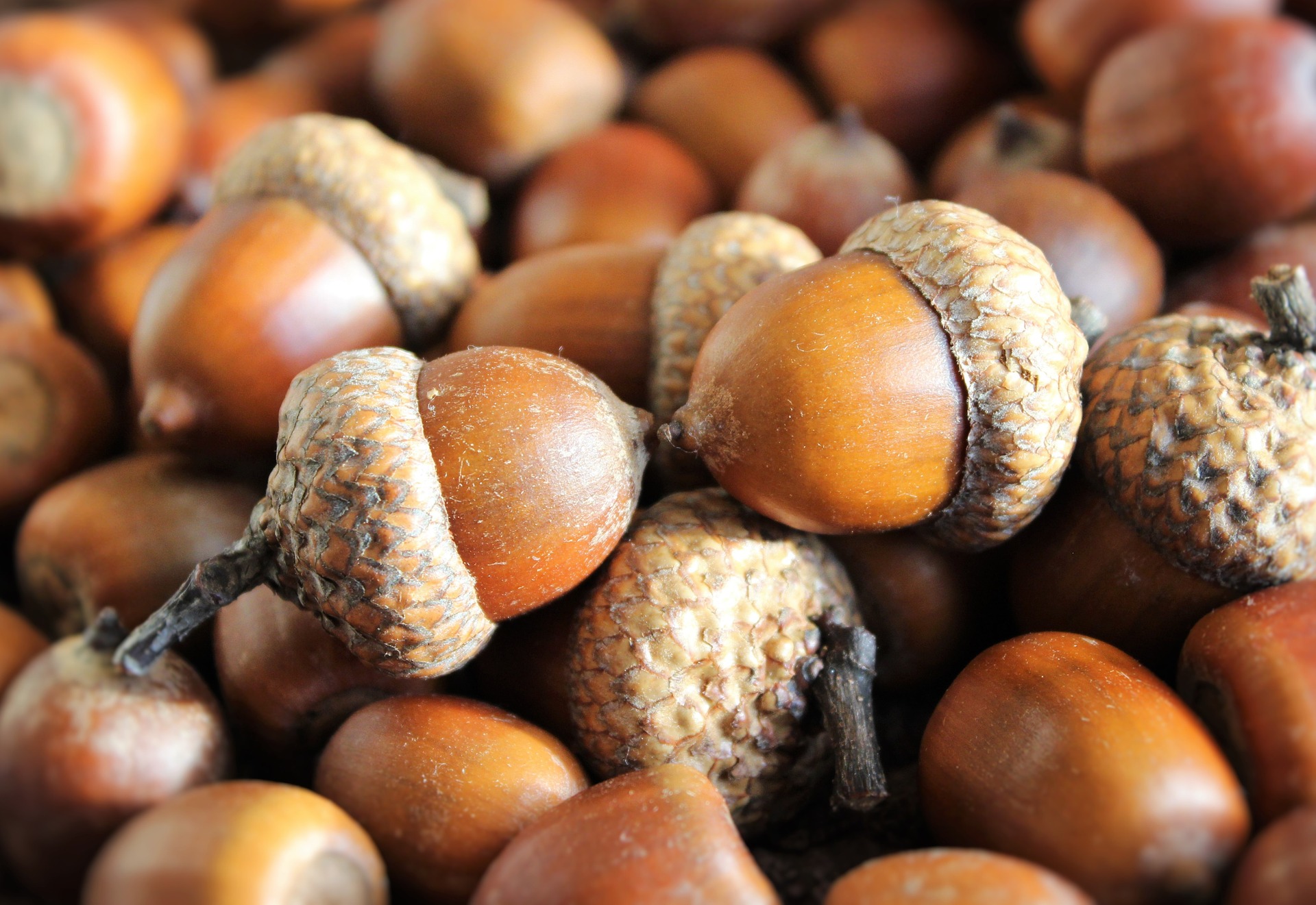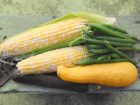A few days ago while walking down a city street with a friend, we passed under a huge oak tree that had littered the ground with more acorns then I had ever seen before. There were so many that every squirrel in a mile radius must have been fat as a cat. There were so many that the ground was caked with flatten acorn meat. I picked one up and could tell that the ratio of nut meat to shell was good. Once you got the shell off it was easier to get the meat out than say, a hickory nut (very difficult!). So what’s the deal with acorns? Why aren’t they grown or sold commercially? Why are they a forgotten food?
The most obvious reason why acorns are mostly ignored as a mainstream food source these days is that they are small (compared to say walnuts or chestnuts), tannic, and a take a little work to remove form their shells. Don’t give up and close this window yet!! Acorns are also a good source of protein, vitamins and minerals, and can be found in abundance, generally for free.
Types of Oak trees that produce good “sweet” acorns include:
Ashworth Burr Oak, Bebbs Oak, East Coast White Oak, Valley Oak, Bing Bur Oak, Pin Oak, Cork Oak, Burgambel Oak, California Black Oak, Blue Oaks.
Traditional Uses:
Acorns were traditionally used by many Native American groups (especially in California) as a staple food crop. They were collected in the fall, dried in the sun, then stored in hollow trees or large baskets often lined with pine needles or wormwood. Native Americans most often used the acorns to make flour or in the case of some Algonquin tribes, oil. Because of the controlled burning practices of Native Americans, the larvae of the acorn moth and oak weevils were controlled. Without this pest control, up to 95% of a particular oak’s acorns can be infested.
Cracking the nut:
Before you waste a lot of time cracking open your acorns, check for a little hole in the shell. If there is a little hole, then you know you have an acorn that has been bored out by a weevil. Toss it.
There are several ways to remove the meat of the acorn from the shell. Experiment and see what works best for you and your particular acorns. You can use a good old nut cracker, whack them with a hammer, or slice them in half with a heavy sharp knife, then pop out the meat with the tip of a small knife.
You can shell the acorns straight into a bowl of water. This will get the tannin leaching process going, plus, according to HonestFood, will help keep the meats from oxidizing, resulting in a lighter acorn flour.
Leaching out the tannins:
If you go with acorns that are “sweet” i.e. lower in tannic acid, then you will have less work leaching the tannins out. There are several possibilities depending on the end result you are wanting. If your end product will be pieces of acorns, then to leach the tannins you should place the pieces in cold water, bring the water to a boil, pour the water off and repeat the process up to five times. This obviously uses a lot of energy.
If you are making flour then you can first pulverize the acorns using a traditional mortar and pestle or a food processor, boil the resulting meal, then separate the acorn meal from the water using a cheesecloth. You’ll be left with a wet “dough” of sorts which can be spread out on a cookie sheet to dry in the oven (135-170 degrees) or in a food dehydrator. If you prefer you can do the leaching before you grind the acorns to meal, but as noted, that is more energy intensive. Once the meal is dry again, put it back in the food processor until it is ground to a flour-like consistency.
For leaching, using no energy, just time and water, fill a mason jar 3/4 full of cold water and 1/4 full of acorn flour. Shake the jar up good, then once in the morning and once in the evening, pour the water off (might want to cover the top with cheesecloth), and refill the water. Repeat for up to 10 or more days. Dry the flour in the same way as mentioned above.
Storing:
Make sure your end product is good and dry. You can roast the acorn pieces in the oven or simply set them out in the sun or a warm spot to dry. Flour can be stored in air tight baggies or jars. Acorns have a high fat content so they should be refrigerated or frozen once the leaching processes is complete.
Nutritional Information:
Acorns are a good source of Folate, Manganese, and Vitamin B6. They are also high in protein and carbohydrates. However, the amount of fat content, protein, and carbohydrates varies greatly depending on the species.
Other sources and recipes:
http://www.ecocomposite.org/native/carbohydrates
http://www.oikostreecrops.com/store/prodtype.asp?PT_ID=150&strPageHistory=cat
Similar Stories:
- ADAPTING YOUR POND TO CLIMATE CHANGE
- Five Myths About Food Safety and Home Gardens
- Gluten Free Gnocchi (Featuring Winter Squash!)
- 20 Perennial Crops to Plant Now and Enjoy For A Lifetime.
- A LOAD OF OLD CREPE




